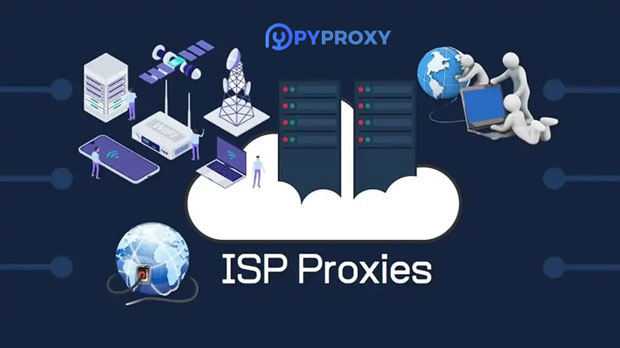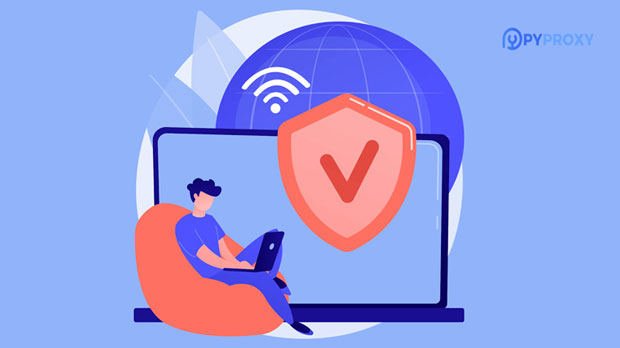What is the difference between a proxy and an IP address?
In the world of networking and online security, the terms "proxy" and "IP address" are frequently used but often misunderstood. At first glance, they may appear similar, as both deal with internet traffic and online identity. However, they serve very different purposes. An IP address is a unique numerical label assigned to every device connected to the internet, allowing it to communicate with other devices. On the other hand, a proxy acts as an intermediary between the user's device and the internet, masking the user's real IP address for purposes like security, privacy, and performance enhancement. Understanding these concepts and their distinctions is crucial for anyone looking to optimize their online presence, enhance privacy, or safeguard against cyber threats. What Is an IP Address?An IP address (Internet Protocol address) is essentially the identity of a device on a network. Every device that connects to the internet—whether a computer, smartphone, or even smart home device—requires an IP address. This unique number helps identify the device's location within the network, ensuring data is sent to the correct destination. There are two primary types of IP addresses: IPv4 and IPv6. IPv4 addresses are made up of four sets of numbers separated by dots (e.g., 192.168.1.1), while IPv6 addresses are much longer and use hexadecimal characters. The role of an IP address is straightforward—without it, devices would not be able to communicate effectively with each other over the internet. However, an IP address can also reveal sensitive information, such as the user's geographic location, and may even be used to track online behavior.What Is a Proxy?A proxy server acts as a gateway between a user's device and the internet. When a user connects to a website or service through a proxy, the request is first sent to the proxy server, which then forwards the request to the desired destination. The key feature of a proxy is that it hides the user's real IP address, allowing them to browse the internet anonymously. Proxies can serve various functions depending on their configuration. Some proxies only relay web traffic (HTTP or HTTPS), while others may work with a variety of protocols. For example, a SOCKS proxy can handle a wide range of traffic types, including email, file transfers, and streaming. Proxies can be used for privacy, security, content filtering, or bypassing regional restrictions. Key Differences Between IP Addresses and Proxies1. Identity and Anonymity: The primary distinction between an IP address and a proxy lies in their relationship to online identity. An IP address identifies a device and provides a way to trace it back to its source. In contrast, a proxy hides or changes the user's IP address, offering a layer of anonymity. When using a proxy, the destination website sees the IP address of the proxy server, not the user's actual address. This masking process is crucial for privacy-conscious individuals or those seeking to avoid geographical restrictions.2. Security and Privacy: An IP address can potentially expose a user's physical location, internet service provider, and browsing habits. While this information is often used by websites for targeted advertising or tracking, it can also pose a privacy risk. A proxy adds an additional layer of security by obfuscating the real IP address, making it more difficult for websites to collect detailed information about the user. Moreover, proxies can be configured to encrypt traffic, which adds another layer of security when browsing online.3. Traffic Routing: An IP address is the endpoint for internet traffic, whereas a proxy serves as an intermediary that reroutes the traffic. This difference in functionality means that an IP address is the direct identifier for a device on the internet, while a proxy can modify, filter, or redirect that traffic based on various parameters.4. Use Cases: The use cases for an IP address and a proxy differ significantly. An IP address is essential for basic internet connectivity and communication. Every device must have one to access the internet. However, a proxy is used when a user wants to control how their traffic is routed, mask their identity, bypass geographical restrictions, or enhance security. Proxies are often employed in business environments, where they provide additional control over employee internet use, or by individuals seeking to maintain privacy or avoid content restrictions.Advantages and Limitations of IP AddressesAdvantages:- Unique Identification: The primary function of an IP address is to uniquely identify a device on the network. This makes it an essential part of communication between devices on the internet.- Simplicity: An IP address is straightforward and does not require any additional configuration for basic internet access.- Direct Communication: Devices can directly communicate with each other when using an IP address, ensuring a seamless internet experience.Limitations:- Tracking: An IP address can be used to track a user's activities and geographic location, potentially compromising privacy.- Security Risks: Because an IP address is publicly visible, it can be targeted by malicious actors for attacks like DDoS (Distributed Denial of Service).- Limited Anonymity: While an IP address is necessary for online activity, it offers little to no privacy, which can be a concern for privacy-conscious users.Advantages and Limitations of ProxiesAdvantages:- Enhanced Privacy: Proxies can effectively hide a user's real IP address, providing anonymity and protecting privacy while browsing the internet.- Bypassing Restrictions: Proxies are commonly used to bypass regional restrictions and access content that may be blocked in certain geographic areas.- Security Features: Some proxies offer encryption, which adds a layer of security and helps protect data from hackers and cybercriminals.- Content Filtering: In business or educational settings, proxies can filter web content to block access to inappropriate sites or prevent certain types of traffic.Limitations:- Performance Impact: Using a proxy can sometimes slow down internet speeds, as the traffic has to go through an additional server before reaching its destination.- Complex Configuration: While proxies provide more control, they may require more technical knowledge to set up and maintain compared to simply using an IP address.- Potential for Misuse: Proxies can be misused for malicious purposes, such as hiding the origin of cyberattacks or engaging in fraudulent activities.Conclusion: Understanding the Role of Proxies and IP AddressesWhile both proxies and IP addresses play essential roles in internet communication, their functions are distinct. An IP address identifies a device on the internet, while a proxy acts as an intermediary that hides or alters that identity for privacy, security, or convenience purposes. Understanding the differences between these two concepts is crucial for anyone looking to optimize their online experience, safeguard their privacy, or enhance their security.For those seeking to maintain their anonymity online or bypass geographical restrictions, proxies offer significant advantages. On the other hand, an IP address is necessary for basic internet connectivity and communication. Both tools have their uses, and understanding when and how to use them effectively can significantly improve one's online experience.
2025-01-21

























































